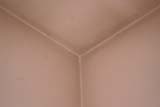 Ghosting is the darkening of surfaces at specific locations in buildings, including homes. It is largely the result of diffusional deposition of particles with diameters less than a micrometer. Particles in this size range are dominated by those created by combustion. They tend to be black and have a very large surface area to mass ratio. A very small mass of these particles can result in an easily noticeable effect. Particles in this size range are affected by the statistical influence of the motion of gas molecules near surfaces. As a result they tend to collect on surfaces where turbulence or constriction bring these particles in larger numbers close to surfaces. The boundary between ceilings and walls are a typical collection site. Another is behind picture frames hung on walls. The cause of ghosting at the edge of wall-to-wall carpeting is different and is discussed below. For information on the sources of combustion particles in homes see "soot" in the "Photo Gallery by Name" file on this site (Click here) . For more information on particle deposition in buildings see Chapter 3 in the text PARTICLES AND HEALTH (Click here) 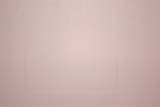
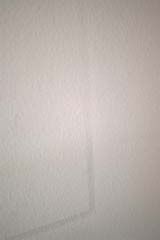

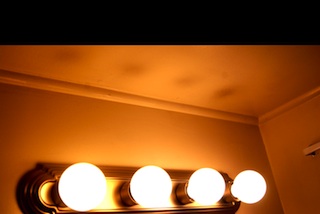
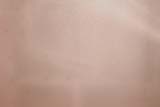 Ghosting on carpets where the carpet meets the wall tends to be caused by two
different processess. One is the result of the
difficulting of cleaning the edge of the carpet. Vacuum cleaners are not
designed to be effective up to the very edge of
the wall. As a result the edge of the carpet is not cleaned as effectively and
will accumulate dust with time. This becomes
visible on lighter colored carpets rather quickly. This can be remidied by using
a special attachment to the vacuum cleaner
designed to reach these areas. A second cause of ghosting on carpets at the edge
of the wall has to do with the wall
"breathing". The cavity in the wall must equalize pressure with the indoor
environment. Barometric pressure is one of these
drivers but wind pressure, opening and closing doors, forced air heating and
cooling, and other forces can change air pressure
on a much more frequent basis. Filtration, impaction, and diffusion all tend to
deposit particles on and in the carpet at
the base of the wall, where the wall "breathes".
Ghosting on carpets where the carpet meets the wall tends to be caused by two
different processess. One is the result of the
difficulting of cleaning the edge of the carpet. Vacuum cleaners are not
designed to be effective up to the very edge of
the wall. As a result the edge of the carpet is not cleaned as effectively and
will accumulate dust with time. This becomes
visible on lighter colored carpets rather quickly. This can be remidied by using
a special attachment to the vacuum cleaner
designed to reach these areas. A second cause of ghosting on carpets at the edge
of the wall has to do with the wall
"breathing". The cavity in the wall must equalize pressure with the indoor
environment. Barometric pressure is one of these
drivers but wind pressure, opening and closing doors, forced air heating and
cooling, and other forces can change air pressure
on a much more frequent basis. Filtration, impaction, and diffusion all tend to
deposit particles on and in the carpet at
the base of the wall, where the wall "breathes".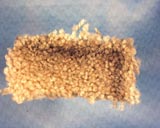
|

